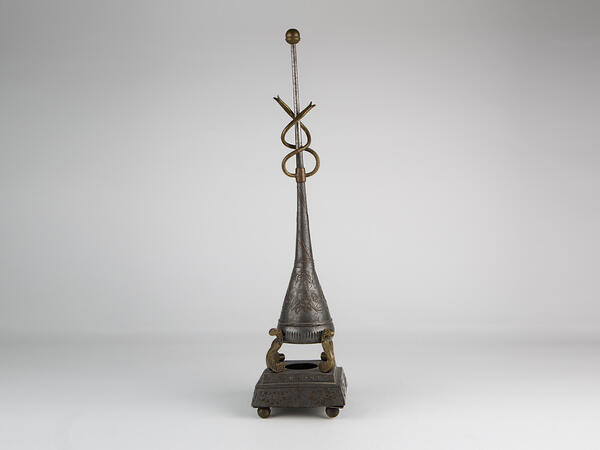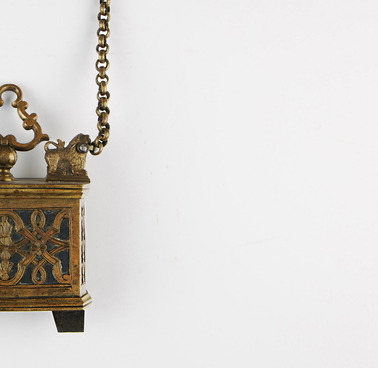In the early 18th century, expensive and prestigious accessories appeared in aristocrat households — aroma bowls and incense burners.
An incense burner is a container for burning incense in a room. Aromatic substances and incense were placed inside the incense burner and ignited. The smoke then began passing through the holes in the lid. Aroma vases were no less popular, especially in the age of Enlightenment. Such vases were better known as “potpourri” vases, which, when translated from French literally meant “rotten pot”. Even though now this term is used primarily to describe a musical performance in which popular melodies are loosely stringed together, initially it was meant to denote an aroma vase. The richly decorated vases usually came in pairs and filled with a mixture of water, flower petals and aromatic herbs. Traditionally, such vases were decorated with flowers modeled from plaster. One can unmistakably identify an aroma bowl by the perforated lid — it allowed the fragrance to persist longer than it would have if the vase was open, as the aroma would gradually seep through the holes in the lid.
In addition to sanitary and aromatic purposes, incense burners were also used as ritual objects. Christianity adopted the tradition of using censers during religious ceremonies from Judaism. Incense was placed on top of a red-hot coal inside the censer. The aromatic resin of oriental trees would then begin to burn emitting a fragrant smoke. Censers were made mainly of precious metals such as gold and silver, and decorated in a variety of patterned motifs.
In the 19th century, Russian literary and musical salons were en vogue. They were held by rich and noble women who surrounded themselves with poets, artists, musicians and creative intelligentsia and invited them to their houses to discuss politics, literary and theatrical novelties. Rooms for such meetings often had an incense burner complementing the atmosphere with exquisite fragrances.




